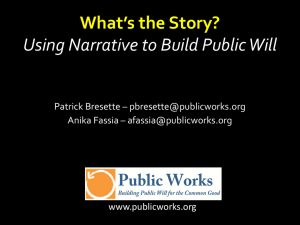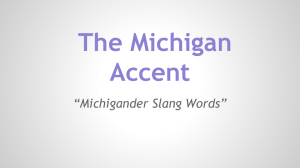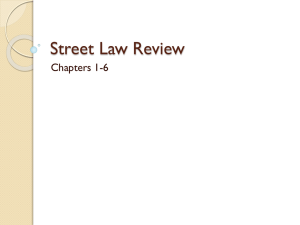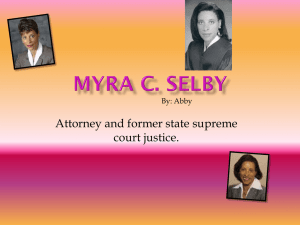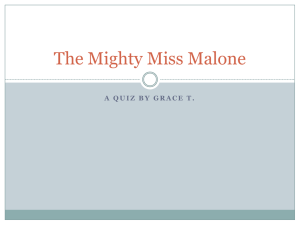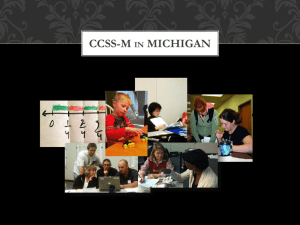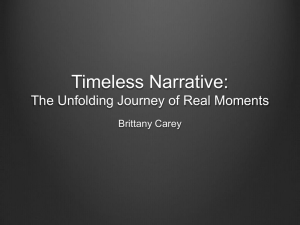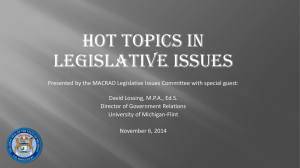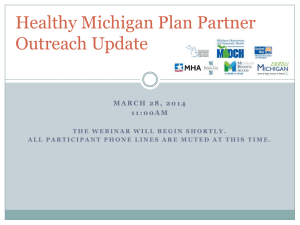Narrative as a Tool - Neighborhood Partnerships
advertisement
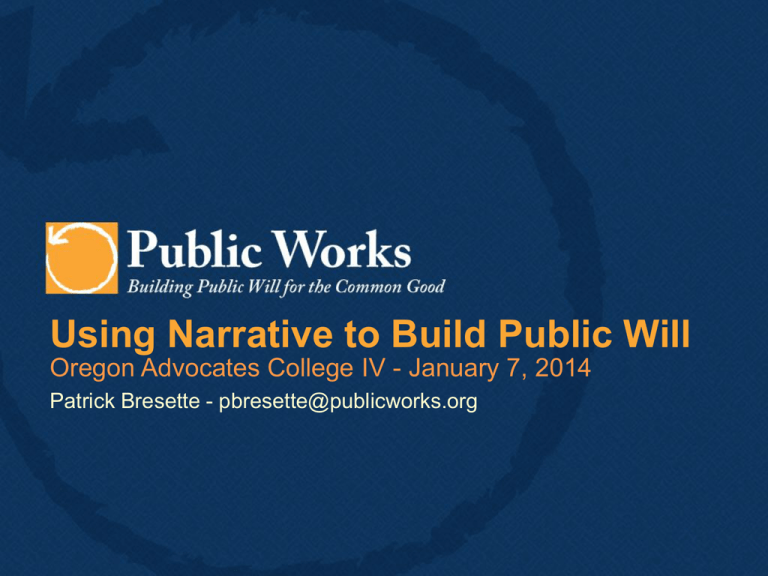
Using Narrative to Build Public Will Oregon Advocates College IV - January 7, 2014 Patrick Bresette - pbresette@publicworks.org Narratives that resonate can connect and persuade ... “Narrative allows us to communicate the emotional content of our values. Narrative is not talking “about” values; rather narrative embodies and communicates those values. And it is through the shared experience of our values that we can engage with others, motivate one another to act, and find the courage to take risks, explore possibility and face the challenges we must face.” - Marshall Ganz, Kennedy School, 2007 3 Narrative-Building and Social Change Framing – as a tool in social movements – refers to “the conscious, strategic efforts by groups of people to fashion shared understandings of the world and of themselves that legitimate and motivate collective action.” - McAdam, McCarthy and Zald 1996 4 Using unique narratives of “place” • Experimenting with State Narratives Researching state mottos, songs, and other shared “narratives.” • Understanding stories grounded in “place” and experiences over time. • Identifying both unique cultural narratives and shared stories. • Using all these elements to make sense of current realities and articulate a way forward. New Mexico – Land of Enchantment The wild lands of New Mexico have been the source of our spirit and culture for a thousand years. We have a legacy of living with the land, not just on it. A new century poses new challenges – balancing growth and prosperity with the open space that is our heritage. The Wilderness Alliance is working to keep this balance and ensure that New Mexico remains enchanting for future generations . . . Developing and Using State (Ohio, Michigan, New York, Missouri, Minnesota & Oregon) Narratives • Using shared state narratives as a way to articulate a common message about how to work together to create a state where everyone can thrive. • A message platform on which discussions of particular programs, policies & budget challenges can be framed in ways that reinforce a core story. • Reclaiming a story about public systems and structures and the role of government. 8 Ohio: a narrative about strong communities . .. 9 Our Story About Ohio We can create an Ohio that is stronger than ever, where all people and communities can thrive. Our past investments in public structures, industries and innovation built America and a state where opportunity was available to everyone. We have the tools to solve today’s challenges and build a bright future for our state. It is time for all Ohioans to work together to protect the public systems that underpin our economy. Making the right choices now will create good jobs and strong communities and the kind of quality of life we want to hand down to future generations. Michigan: a narrative about effort . . . 12 Michigan Narrative From the Motor City to the UP, we in Michigan value hard work, respect and community. Our hands have built things that changed the world, reached out to our neighbors in need and formed an iron fist to fight for what was right--even when it was not easy. Michigan built the American middle class where people earned enough to buy what we made. Today, some say we can no longer afford to support strong public structures like quality schools, good roads, and safe neighborhoods, but we, Michiganders, know that our fate is linked. We must embrace the values of our past in order to build our future. We must invest in our people, our places and our public systems to make our state strong and our families secure. Strong schools, good paying jobs and a healthy environment are the foundation on which to create opportunities, build a strong middle-class, drive innovation and secure a better Michigan for generations to come. Michigan’s 2012 Jobs Plan (AFL-CIO) From the Motor City to the Upper Peninsula, Michigan hands have made the things that have moved people and moved the world. Michigan built the American middle class by paying workers enough to buy the things we make. Michigan succeeded because we chose to think big. Now is not the time to stop investing in our future. We must support the infrastructure, public services, people and places that made it possible for us to be great and grow a vibrant middle class. Our schools, roads, and clean water systems are the foundation on which to create opportunities, drive innovation and make Michigan great again. 14 Message for Mayoral Forum Flint, Michigan - October 24, 2011 Over the generations, the people of Flint have come together to build a prosperous community around the ideals of practical and common sense values, healthy and sustaining neighborhoods, hard work, and the belief in supporting one another. We are proud of this legacy. Our parents, grandparents and great grandparents invested in strong public and private structures designed to keep our community safe, offer the opportunity for a quality education and well-paying jobs, provide for fair and open elections, and ensure the same opportunities for the next generation. We have the same responsibility to our children of today as well as to all who come after us. To the extent that we maintain this duty, we become the keepers of a trust, a covenant, bequeathed to all succeeding generations. 15 The California Dream “California is at a crossroads, and voters must help us decide the path we will take . . . “What's on the line is our vision for California. Over the past 50 years . . . Californians worked together to build a state with great schools, parks and roads and a thriving economy. Our investments paid off in a high quality of life for us all. But that quality of life has been under enormous pressure in recent years. The choice we face today is whether to keep building or to stand by as our infrastructure erodes, our economy stagnates, and the California dream slips away. - Sen. Loni Hancock, Contra Costa Times, 03/11/2011 17 Oregon Narrative Oregon has a history of ingenuity, innovation and independence. Our state’s natural beauty, open spaces, and resources – from the rugged coastline to the Steens Mountains, from lush farmland to high desert, from the mighty Columbia to the wild Rogue -- have nurtured and inspired us for generations. We have worked hard to come together, and to build communities and the public systems – roads, schools, cities and towns -- that sustain us. Today, we face a defining moment. We have new challenges and opportunities ahead of us. Our systems need an upgrade, and we see that our past choices have opened the door to opportunity for some but not for all. We have the tools to create a better future, and to open doors for all Oregonians. We can harness our innovative spirit, our talent, and our energy. We can invest in people and create a better future for the next generation. We can ensure that every person, every family, every community in Oregon can prosper. 18 Incorporating the Oregon Narrative Into Legislative Testimony: “ . . . in Oregon, we’ve worked together to build communities that sustain us. This means supporting our history of ingenuity, innovation and independence. This independence is felt in local decision-making and local solutions that tackle statewide issues and goals. House Bill 2890 helps ensure our communities continue to thrive and open doors for all Oregonians with that independent spirit that is uniquely Oregon. Thank you very much for the opportunity to provide testimony in support of this important bill.” - Jesse Beason, Executive Director, Proud Ground 19 Questions to ask when developing place-based narratives: • Does it tell a story about the place (both as it has been but also as it could be and should be) that taps into shared values, cultural stories, shared experiences, mythology, history, sense of self, etc.? • Is it aspirational and future focused? (not just another crisis story about what is terrible or has been lost) • Does it identify problems and challenges in ways that people can see what is at stake for all those who live in the community? • Does it include solutions? (not just a laundry list of problems) • Does it engage people to be part of the solutions? (not just as passive observers or victims of the status quo) • Does it make our strengths larger than the problems we face? • Does it articulate a central and positive role for government? 21 www.publicworks.org
